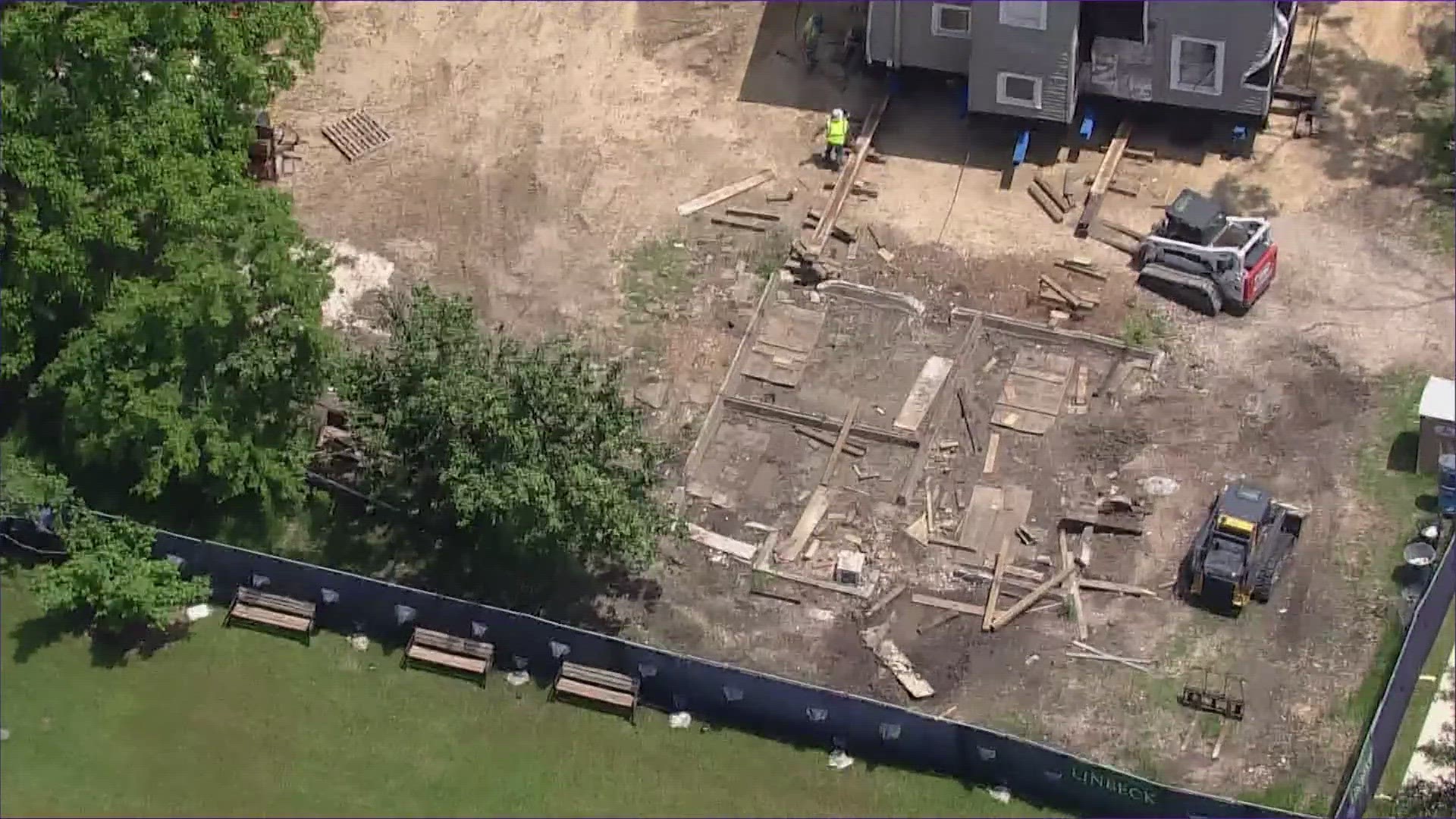HOUSTON — Construction crews used a pretty slick method Monday to move a historic house that's part of the Rothko Chapel in Montrose -- literally. They soaped slider beams with Ivory soap to move the house on Sul Ross about 100 feet.
It's part of phase 2 of Rothko Chapel's $42 million Opening Spaces project which broke ground last week. The expansion, which started in 2019, will include new buildings to support the chapel's ongoing mission in art, spirituality and human rights.
Long cherished by Houston art lovers, Rothko Chapel is a cultural destination that welcomes more than 100,000 visitors from over 100 countries each year.
“The Chapel has never had the room that we need to fulfill our dual mission,” Executive Director David Leslie explained. “The Opening Spaces project is not only about creating spaces that enable us to welcome more visitors, but also facilitating more enriching experiences of the art, deeper contemplation, and the social justice-focused community engagement embedded in our founders’ vision."
The project includes new indoor and outdoor spaces.
“This project will greatly enhance our campus, creating new outdoor spaces and facilities that will allow us to carry out our important work on behalf of human rights and interfaith dialogue,” Opening Spaces Co-Chairman Christopher Rothko. “On the heels of our recent 50th anniversary, the work also gives us a welcome opportunity to lift up and celebrate those who have contributed to the design, building, and stewardship of the Rothko Chapel."
The bungalow moved on Monday will be home to artists in residence and special guests.
History of Rothko Chapel
Rothko Chapel was founded in 1971 by artist Mark Rothko and philanthropists and art collectors John and Dominique de Menil.
"All of them shared a vision that brought together modern art and sacred space to promote human unity, solidarity, and justice," Christopher Rothko said. "This vision is still as relevant today as it was 50 years ago."
The chapel is defined by its 14 monumental Rothko panels.
Dignitaries who've visited the chapel include former President Jimmy Carter and Nelson Mandela. Carter, a passionate defender of human rights, established the Carter-Menil Human Rights Foundation and visited with Desmond Tutu in 1986. He returned in 1991 with Nelson Mandela.
It's been listed on the National Register of Historic Places since 2001.

